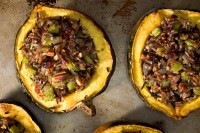
Primo’s Outlook (11/12/12 – 11/17/12)
Market Report
Lettuce:
Market is steady with all Iceberg supplies coming from Huron California. Quality has been good and continues to improve.
Leaf:
Romaine and leaf markets are steady. Overall quality has been very good.
Broccoli:
Market is steady to up slightly. Quality has been very good.
Cauliflower:
Market is on the rise and will likely continue for the Thanksgiving holiday, as supplies are expected to come up short. Overall quality has been good.
Carrots:
Market has remained steady out of Canada and now Georgia in full swing.
Celery:
Celery market has started to climb with the holiday pull. Quality has been very good.
Strawberries:
Cost is up again this week as shippers continue to struggle to meet demand. Quality has improved, but only marginally.
Potatoes:
Idaho market has increased slightly again this week especially on the freight side.
Onions:
Idaho crop has jumped a couple of dollars this week as supplies have tightened up.
Citrus:
Market has adjusted down on small fruit as more shippers are into new crop navels. Lemon market is little changed with good arrivals from Mexico.
Cucumbers:
Market has gotten very strong on cucumber along with light volume.
Peppers:
Market has tightened up and price is up.
Tomatoes:
Tomato market is steady on rounds, cherries, grapes and romas. Quality has been good.
__________________________________________________________________
Primo’s Pick of the Week!
Thanksgiving is almost upon us! Do you have your menu planned? If not, let us offer some last minute ideas – Acorn Squash! Named for its distinct size and shape, acorn squash may be found in three different brilliant colors, green, gold, and white. All varieties of acorn squash have wide ribs and hard skin. They have a taste similar to the combination of hazelnuts and black pepper. They are sweet in flavor and creamy when cooked. With the seeds removed, acorn squash can be baked or used in casseroles. Acorn Squash are as useful decoratively as they are on the table, traditionally cooked. Those who are creative enough may even find ways to marry the two attributes. For variety, hollow out the squash and stuff with a rice and meat mixture or bread stuffing. Acorn Squash is an absolute way to add variety to festive holidays in addition to any time of the year.
Recipe of the Week:
Roasted Acorn Squash with Wild Rice Stuffing
Ingredients:
3 medium acorn squash (about 1 1/2 pounds each), halved lengthwise and seeds removed
3 tablespoons unsalted butter, melted
1 tablespoon packed dark brown sugar
1/2 medium yellow onion, finely chopped
2 medium shallots, finely chopped
4 celery stalks, finely chopped
1 tablespoon minced fresh thyme leaves
2 cups cooked wild rice mix (1 cup uncooked)
2/3 cup pecans, toasted and finely chopped
1/4 cup dried cranberries, finely chopped
1 teaspoon kosher salt, plus more as needed
1/2 teaspoon freshly ground black pepper, plus more as needed
Instructions:
Heat the oven to 450°F and arrange a rack in the middle.
Place squash cut side up on a baking sheet, brush 1 tablespoon of the melted butter over the tops and insides of the squash halves, sprinkle with brown sugar, and season with salt and freshly ground black pepper. Roast in the oven until just fork tender, about 25 to 30 minutes.
Meanwhile, place 1 tablespoon of the melted butter in a large frying pan over medium heat. When it foams, add the onion, shallots, and celery, season with salt and freshly ground black pepper, and stir to coat. Cook, stirring occasionally, until just softened, about 6 minutes. Stir in the thyme and cook until just fragrant, about 1 minute.
Remove from heat and stir in the rice, pecans, cranberries, and measured salt and pepper.
Divide the rice filling among the roasted squash halves (about 1/2 cup for each) and drizzle the remaining tablespoon of butter over top. Continue roasting until the squash is completely fork tender, the edges have started to brown, and the filling is heated through, about 20 to 25 minutes.
Fun Facts of the Week
The yellow and orange flesh of the winter squash is more nutritious and richer in complex carbohydrates, such as beta carotene, than summer squash. Winter squash is always served cooked and, because of its tough skin, only the inside flesh is eaten.


